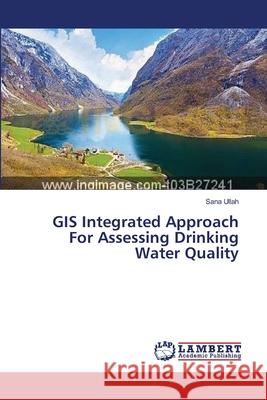GIS Integrated Approach For Assessing Drinking Water Quality » książka
GIS Integrated Approach For Assessing Drinking Water Quality
ISBN-13: 9783659557316 / Angielski / Miękka / 2014 / 100 str.
This book deals with a research study conducted at District Dir Lower Khyber Pakhtunkhwa Pakistan. The study was carried out to assess the drinking water quality and to prepare thematic maps for the physico-chemical parameters. A total of 33 water samples were collected from the study area. The parameters studied were having varying range such as pH (6.5-8.5), electrical conductivity (680-3250 us/cm), alkalinity (190-420 mg/L), total hardness (260-615 mg/L), calcium hardness (150-340 mg/L), magnesium hardness (75-220 mg/L), total solids (880-1250 mg/L), total dissolved solids (720-2010 mg/L), total suspended solids (1-35 mg/L), sodium (100-250 mg/L), chlorides (60-220 mg/L), nitrites (0.5-2 mg/L), sulphate (60-312 mg/L) and potassium (1.9-21.3 mg/L). Thematic maps were prepared for all the studied parameters using ArcGIS 9.3 platform. The results were compared against the standard permissible limits suggested by World Health Organization (WHO) for drinking water. The results showed that the water parameters of the areas distant from river Panjkora lie within the WHO suggested permissible limits, whereas the water quality of the riverine areas is alarming for some parameters."
This book deals with a research study conducted at District Dir Lower Khyber Pakhtunkhwa Pakistan. The study was carried out to assess the drinking water quality and to prepare thematic maps for the physico-chemical parameters. A total of 33 water samples were collected from the study area. The parameters studied were having varying range such as pH (6.5-8.5), electrical conductivity (680-3250 µs/cm), alkalinity (190-420 mg/L), total hardness (260-615 mg/L), calcium hardness (150-340 mg/L), magnesium hardness (75-220 mg/L), total solids (880-1250 mg/L), total dissolved solids (720-2010 mg/L), total suspended solids (1-35 mg/L), sodium (100-250 mg/L), chlorides (60-220 mg/L), nitrites (0.5-2 mg/L), sulphate (60-312 mg/L) and potassium (1.9-21.3 mg/L). Thematic maps were prepared for all the studied parameters using ArcGIS 9.3 platform. The results were compared against the standard permissible limits suggested by World Health Organization (WHO) for drinking water. The results showed that the water parameters of the areas distant from river Panjkora lie within the WHO suggested permissible limits, whereas the water quality of the riverine areas is alarming for some parameters.











